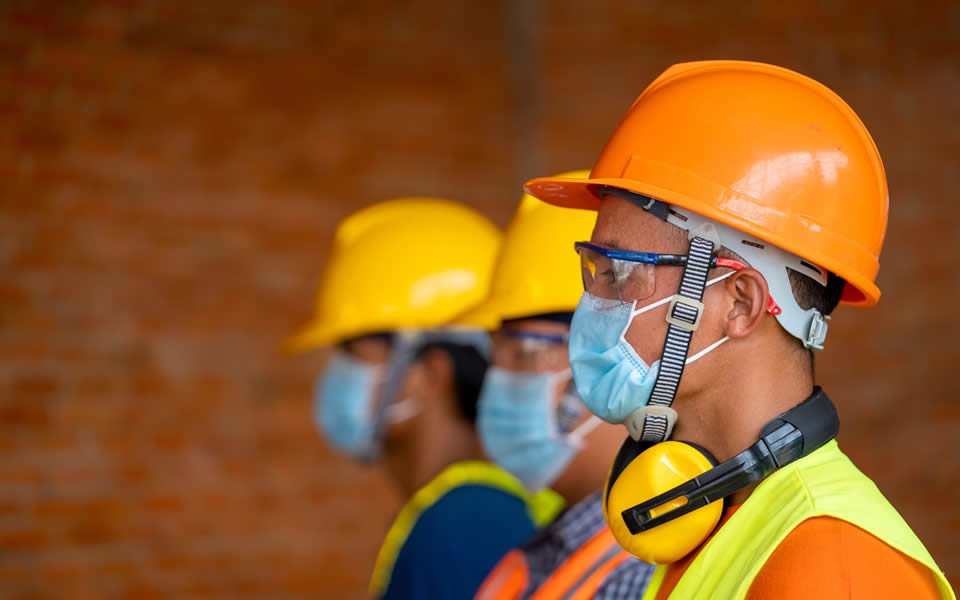Cost Inflation: Construction Costs and the COVID-19 Pandemic
By Andy Choi, Senior Manager, Assurance Services
Undoubtedly, the COVID-19 pandemic disrupted nearly every aspect of people’s lives, including businesses and jobs. The pandemic adversely impacted the construction industry (classified as an essential industry) and as a result, many construction firms experienced and are still experiencing significant financial challenges. During the early stages of the COVID-19 pandemic, many contractors lacked the monetary resources needed to cover employee wages and keep their businesses afloat. Government intervention, through programs such as the employee retention tax credit and the SBA Paycheck Protection Program, somewhat eased contractors’ concerns during the pandemic.
Now, many construction projects that were delayed by the pandemic are back on track and most construction firms are looking to increase their human capital. Unlike the 2008-2009 Great Recession, the economy rebounded quickly from the pandemic. The distribution of the COVID-19 vaccine bolstered the government’s confidence enough to reopen the economy and ease COVID-19 restrictions. The construction industry responded well, and the latest industry trends demonstrate that it has a strong economic outlook for the foreseeable future. Nonetheless, contractors continue to experience the after-effects of the pandemic, including a shortage of construction materials and a sharp increase in construction costs that can lead to decreased profits.
The cost of construction materials normally increases annually due to inflation (an issue that contractors faced even prior to the pandemic). However, the inflation that accompanied the pandemic has been significantly different and has largely impacted construction costs. The U.S. construction industry is heavily dependent on foreign construction materials such as steel and stone. Because COVID-19 is a global pandemic, it caused closures and delays at international factories that produce these materials. As a result, the supply of construction materials dramatically decreased in the U.S, and what remained became much more expensive.
During the initial stages of the pandemic, contractors bid less just to stay in business. According to the Associated General Contractors (AGC), bid prices and input costs have increased by 0.5% and 12.8% respectively since the onset of the pandemic. AGC’s survey also demonstrated that the unexpected increase in the cost of materials significantly reduced the profit margins in the construction industry and even resulted in some firms incurring losses. Contractors with fixed-price contracts have had to cut a share of their profits to make up for the increased construction costs.
Generally, there is a significant amount of time between when a contract is signed and when contractors deliver final products to customers. But unlike manufacturing or retail companies, it is not easy to increase cost after the contract is signed. The cost of a project is estimated beforehand and the bid for the estimated costs is made. As a result, it has always been a challenge for contractors to deal with unforeseen additional costs. The emergence of the COVID-19 pandemic negatively affected many contractors since was something they couldn’t anticipate. Going forward, contractors should always have a contingency plan that allows them to mitigate unforeseen events that might occur in the future.
It is important for contractors to evaluate the existing costs and the possibility of a cost increase when bidding for a project. Furthermore, contractors should obtain accurate and complete information on materials that will be used for the project, and study the historical cost of inflation to incorporate potential changes into the estimate. They should also add clauses to contracts that allow for price adjustments and determine the timing of ordering materials. Contractors should identify materials that may have volatile prices and consider pre-ordering those materials before prices increase. Negotiating with suppliers to set fixed prices on specific materials can be a beneficial way to prepare for uncertainties.
Resources
Click here to download the latest Marcum Commercial Construction Index >>
Click here to download the latest Marcum-PAS Contractor Compensation Quarterly >>
Click here to download the latest Marcum Commercial JOLTS Analysis >>







